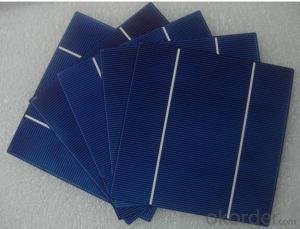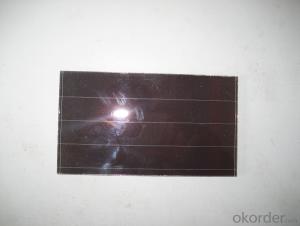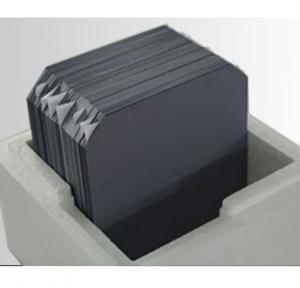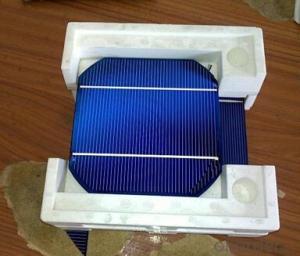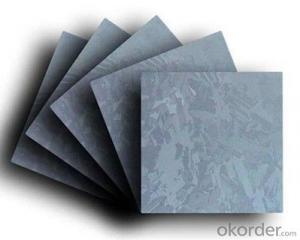Power 185WP 6 Inch Monocrystaline Solar Panel
- Loading Port:
- China main port
- Payment Terms:
- TT OR LC
- Min Order Qty:
- 100 watt
- Supply Capability:
- 10000 watt/month
OKorder Service Pledge
OKorder Financial Service
You Might Also Like
Power 185WP 6" Poly Crystalline Solar Cell
Solar Module Summarize
Solar Module is the core part of solar PV power systems,also is the highest value part of it. The function of Solor Module is to convert the sun's radiation to electrical energy, or transfer it to battery and store in it, or to drive the load running.
The Product has been widely used in space and ground, it mainly used for power generation systems, charging systems, road lighting and traffic signs areas. It could offer a wide range of power and voltage, and with high conversion efficiency, and long service life.
Our Products
5x5 inch (125x125mm) mono solar cells and 6x6 inch (156x156mm) poly and mono solar cell
Mono-crystalline and Poly-crystalline solar panel from 3watt to 327watt
Home-use solar system 5W to 5KW
Other accessories like Inverter and battery etc.
Main Characteristic
Eff(%) | 18.00- 18.10 | 18.10- 18.20 | 18.20- 18.30 | 18.30- 18.40 | 18.40- 18.50 | 18.50- 18.60 | 18.60- 18.70 | 18.70- 18.80 | 18.80- 18.90 | 18.9- 19.0 | 19.1- 19.1 | 19.1- 19.2 |
Pm(W) | 4.30 | 4.33 | 4.35 | 4.37 | 4.40 | 4.42 | 4.44 | 4.47 | 4.49 | 4.52 | 4.54 | 4.56 |
Isc(A) | 8.71 | 8.73 | 8.76 | 8.77 | 8.78 | 8.82 | 8.83 | 8.85 | 8.86 | 8.88 | 8.9 | 8.93 |
Im(A) | 8.19 | 8.21 | 8.24 | 8.26 | 8.30 | 8.33 | 8.35 | 8.39 | 8.42 | 8.45 | 8.47 | 8.51 |
Voc(V) | 0.630 | 0.631 | 0.632 | 0.633 | 0.634 | 0.634 | 0.635 | 0.636 | 0.637 | 0.637 | 0.638 | 0.64 |
Vm(V) | 0.527 | 0.528 | 0.529 | 0.531 | 0.531 | 0.532 | 0.534 | 0.534 | 0.535 | 0.536 | 0.537 | 0.538 |
FF(%) | 78.6 | 78.7 | 78.8 | 79.0 | 79.2 | 79.3 | 79.5 | 79.6 | 79.8 | 80 | 80 | 80 |
Product Show
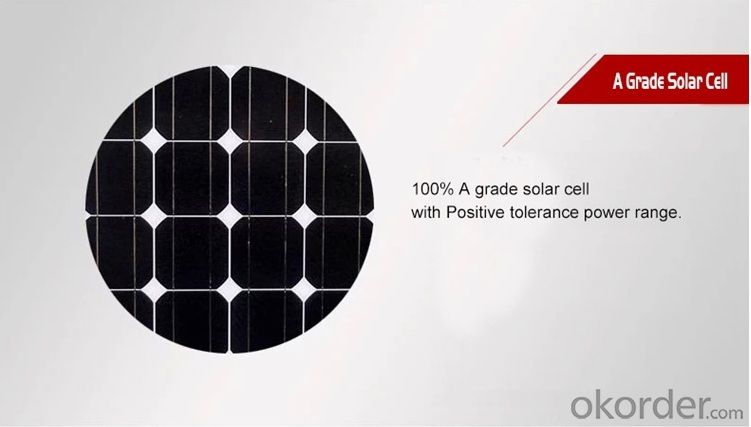
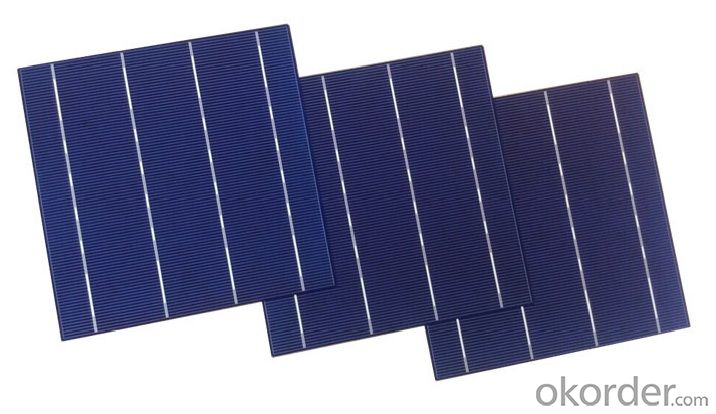
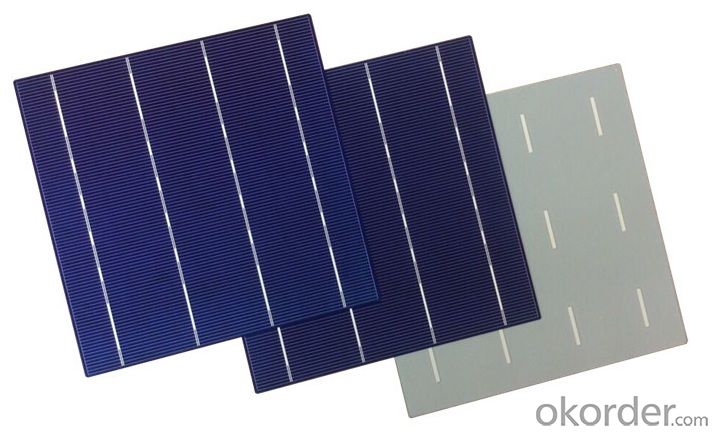
Warranties
6Inch 2BB Polycrystalline Multi Solar Cells Mono Solar Cell
For c-Si panel: 25years output warranty for no less than 80% of performance, 10 years output warranty for no less than 90% of performance. Free from material and workmanship defects within 5 years.
For a-Si panel: 20 years output warranty for no less than 80% of performance, 10 years output warranty for no less than 90% of performance. Free from material and workmanship defects within 2 years.
- Q:What is the role of anti-reflective coating on solar silicon wafers?
- The role of anti-reflective coating on solar silicon wafers is to minimize the reflection of sunlight and increase the amount of light absorption by the silicon material. By reducing reflection, the coating allows more light to reach the silicon wafer, enhancing the efficiency of solar cells and ultimately improving the overall performance of the solar panel.
- Q:How do solar silicon wafers perform in high-salt environments?
- Solar silicon wafers generally perform well in high-salt environments due to their inherent corrosion resistance. The protective layers and encapsulation used in solar panels help shield the silicon wafers from the corrosive effects of saltwater or high-salt environments, ensuring their long-term functionality and durability.
- Q:How do solar silicon wafers perform in high-wind conditions?
- Solar silicon wafers perform well in high-wind conditions as they are typically securely mounted to structures or panels, ensuring their stability. Additionally, modern solar installations are designed to withstand strong winds and extreme weather conditions, making them capable of withstanding high-wind situations.
- Q:What is the role of surface coatings on solar silicon wafers?
- The role of surface coatings on solar silicon wafers is to enhance their performance and durability in solar cell applications. These coatings serve multiple purposes such as reducing surface reflectivity, improving light absorption, preventing surface contamination, increasing electrical conductivity, and protecting against environmental factors like humidity and corrosion. By enhancing the surface properties of silicon wafers, these coatings contribute to the overall efficiency and longevity of solar cells.
- Q:How are solar silicon wafers affected by humidity and moisture?
- Solar silicon wafers are adversely affected by humidity and moisture. Moisture can cause corrosion and oxidation of the wafer's surface, leading to reduced efficiency and performance of the solar cell. High humidity levels can also result in the formation of water droplets on the wafer, which can create shading and impact the generation of electricity. Therefore, it is crucial to protect solar silicon wafers from excessive humidity and moisture to ensure their optimal functioning and longevity.
- Q:What is the role of doping in solar silicon wafers?
- The role of doping in solar silicon wafers is to introduce impurities into the silicon material, which alters its electrical properties. This process helps create the p-n junctions necessary for the functioning of solar cells. By doping the silicon, it becomes either positively or negatively charged, allowing for the separation of electrons and holes when exposed to sunlight. This facilitates the generation and flow of electricity, ultimately enhancing the efficiency and performance of solar panels.
- Q:Are there any alternatives to solar silicon wafers?
- Yes, there are several alternatives to solar silicon wafers. Some of the alternatives include thin-film solar cells made from materials like cadmium telluride (CdTe) and copper indium gallium selenide (CIGS). These thin-film technologies offer advantages such as flexibility, lightweight, and lower manufacturing costs compared to traditional silicon wafers. Other emerging alternatives include organic solar cells, perovskite solar cells, and quantum dot solar cells, which have shown promising potential for achieving higher efficiency and cost-effectiveness in the future.
- Q:How are solar silicon wafers protected from transportation damage?
- Solar silicon wafers are protected from transportation damage through the use of specialized packaging materials and handling procedures. These wafers are typically placed in anti-static trays or boxes, which provide cushioning and prevent physical impact during transit. Additionally, shock-absorbing materials such as foam or bubble wrap may be used to further protect the wafers from vibrations or jolts. Furthermore, stringent quality control measures are implemented to ensure that the packaging is secure and that the wafers are not exposed to extreme temperatures or humidity, which could potentially damage their delicate structure.
- Q:How is a degradation rate measured in a solar silicon wafer?
- A degradation rate in a solar silicon wafer can be measured by monitoring the decrease in its power output over a specific period of time. This can be done by conducting regular performance tests and comparing the initial power output with the subsequent measurements. The difference in power output indicates the degradation rate, which is typically expressed as a percentage decrease per year.
- Q:How are solar silicon wafers affected by microcracks?
- Solar silicon wafers are negatively affected by microcracks as they can impair the structural integrity and electrical performance of the wafer. These tiny cracks, although invisible to the naked eye, can propagate and expand over time due to thermal stress and mechanical loading, leading to reduced efficiency and potential breakage of the wafer. Additionally, microcracks can also facilitate the penetration of moisture and impurities, further compromising the wafer's quality and long-term reliability.
1. Manufacturer Overview |
|
|---|---|
| Location | |
| Year Established | |
| Annual Output Value | |
| Main Markets | |
| Company Certifications | |
2. Manufacturer Certificates |
|
|---|---|
| a) Certification Name | |
| Range | |
| Reference | |
| Validity Period | |
3. Manufacturer Capability |
|
|---|---|
| a)Trade Capacity | |
| Nearest Port | |
| Export Percentage | |
| No.of Employees in Trade Department | |
| Language Spoken: | |
| b)Factory Information | |
| Factory Size: | |
| No. of Production Lines | |
| Contract Manufacturing | |
| Product Price Range | |
Send your message to us
Power 185WP 6 Inch Monocrystaline Solar Panel
- Loading Port:
- China main port
- Payment Terms:
- TT OR LC
- Min Order Qty:
- 100 watt
- Supply Capability:
- 10000 watt/month
OKorder Service Pledge
OKorder Financial Service
Similar products
New products
Hot products
Related keywords



















